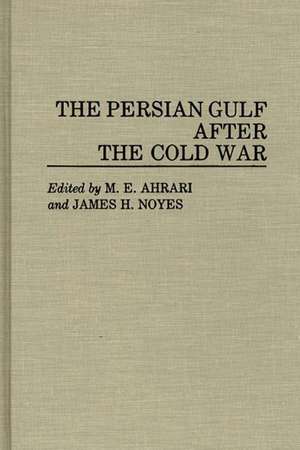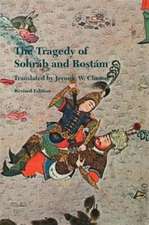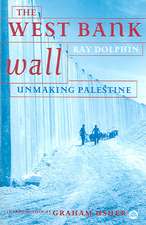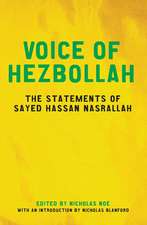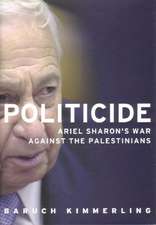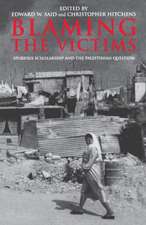The Persian Gulf After the Cold War
Autor Mohammed E. Ahrari, James Noyesen Limba Engleză Hardback – 29 oct 1993 – vârsta până la 17 ani
Preț: 438.24 lei
Preț vechi: 708.02 lei
-38% Nou
Puncte Express: 657
Preț estimativ în valută:
83.87€ • 91.07$ • 70.45£
83.87€ • 91.07$ • 70.45£
Carte tipărită la comandă
Livrare economică 22 aprilie-06 mai
Preluare comenzi: 021 569.72.76
Specificații
ISBN-13: 9780275944575
ISBN-10: 0275944573
Pagini: 264
Dimensiuni: 156 x 235 x 16 mm
Greutate: 0.54 kg
Ediția:New.
Editura: Bloomsbury Publishing
Colecția Praeger
Locul publicării:New York, United States
ISBN-10: 0275944573
Pagini: 264
Dimensiuni: 156 x 235 x 16 mm
Greutate: 0.54 kg
Ediția:New.
Editura: Bloomsbury Publishing
Colecția Praeger
Locul publicării:New York, United States
Notă biografică
M. E. AHRARI is Professor of Middle East and West Asian Affairs at the United States Air War College. He is a specialist in American policy process, with interests in foreign and defense policies, superpower relations in the Middle East, and the political economy of oil. His books include The Gulf and International Security (1989), Ethnic Groups and U.S. Foreign Policy (Greenwood Press, 1987), OPEC--The Failing Giant (1986), and The Dynamics of Oil Diplomacy: Conflict and Consensus (1980). He has also published extensively in professional journals in the United States, the United Kingdom, and Asia.JAMES H. NOYES has been a Research Fellow at the Hoover Institution since 1985. He served as Deputy Assistant Secretary of Defense for Near Eastern, African, and South Asian Affairs in the Nixon and Ford administrations. He has written The Clouded Lens: Persian Gulf Security and U.S. Policy( 1979, 1981) and his most recent publications have appeared in American-Arab Affairs and in M. E. Ahrari's (editor), The Gulf and International Security (1989). Since 1984, he has served as editor of the Middle East section of Yearbook on International Communist Affairs.
Cuprins
AcknowledgmentsIntroduction: Background and Overview by M. E. Ahrari and James H. NoyesThe Outside Powers and the Persian GulfPolicies of the United States and the CIS: A Post-Cold War Perspective by James H. NoyesThe Persian Gulf: A European Challenge to U.S. Hegemony? by Leon T. HadarDominant Indigenous PlayersIran in the Post-Cold War Persian Gulf Order by M. E. AhrariIraq and the Post-Cold War Order by Ahmad HashimThe Saudi Role in the New Middle East Order by Joseph TwinamStrategic Issues and ProspectsGulf Oil: Geo-Economic and Geo-Strategic Realities in the Post-Cold War and Post-Gulf War Era by David Winterford and Robert E. LooneyArms Race in the Persian Gulf: The Post-Cold War Dynamics by M. E. AhrariThe Gulf Cooperation Council: Prospects for Collective Security by Kenneth KatzmanConclusion: Regional Outlook by M. E. Ahrari and James H. NoyesAppendix A: The Proliferation of Chemical Weapons in the Middle East and Its ImplicationsAppendix B: The Proliferation of Ballistic Missiles in Selected Middle Eastern CountriesSelected Bibliography
